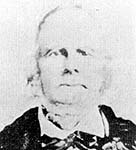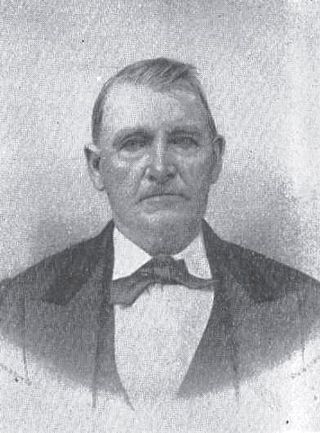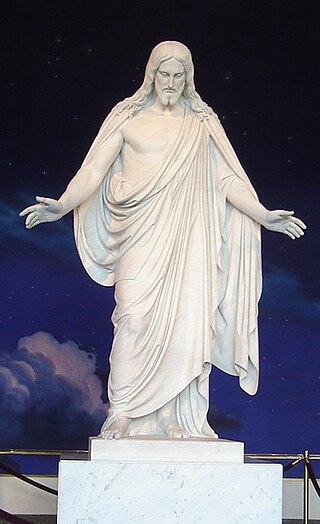Related Research Articles

Leonard James Arrington was an American author, academic and the founder of the Mormon History Association. He is known as the "Dean of Mormon History" and "the Father of Mormon History" because of his many influential contributions to the field. Since 1842, he was the first non-general authority Church Historian for the Church of Jesus Christ of Latter-day Saints, from 1972 to 1982, and was director of the Joseph Fielding Smith Institute for Church History from 1982 until 1986.

Mormon cinema usually refers to films with themes relevant to members of the Church of Jesus Christ of Latter-day Saints. The term has also been used to refer to films that do not necessarily reflect Mormon themes but have been made by Mormon filmmakers. Films within the realm of Mormon cinema may be distinguished from institutional films produced by the LDS Church, such as Legacy and Testaments, which are made for instructional or proselyting purposes and are non-commercial. Mormon cinema is produced mainly for the purposes of entertainment and potential financial success.

Brigham Young Jr. served as president of the Quorum of the Twelve Apostles of the Church of Jesus Christ of Latter-day Saints from 1899 until his death. His tenure was interrupted for one week in 1901 when Joseph F. Smith was the president of the Quorum.

Orson Spencer was a prolific writer and prominent member of the Church of Jesus Christ of Latter-day Saints. He served in several highly visible positions within the church and left an extensive legacy of theological writings. Orson Spencer is one of the examples William Mulder cites of highly educated people becoming Mormons during the time of Joseph Smith

Milo Andrus was one of earlest leaders in the Church of Jesus Christ of Latter-day Saints.

The Mormon corridor is the areas of western North America that were settled between 1850 and approximately 1890 by members of the Church of Jesus Christ of Latter-day Saints, who are commonly called "Mormons".

Zera Pulsipher was a First Seven Presidents of the Seventy of the Church of Jesus Christ of Latter-day Saints. In that capacity, he provided leadership to the early Mormon community, most notably in the exodus of a large group of Saints from Kirtland, Ohio. He was also an active missionary who baptized Wilford Woodruff into the LDS Church.

Leonard Wilford Hardy was an early convert in the Latter Day Saint movement, a Mormon pioneer and a member of the presiding bishopric of the Church of Jesus Christ of Latter-day Saints from 1856 until his death.
The "Runaway Officials of 1851" were a group of three federal officers, Judge Perry E. Brocchus, Judge Lemuel Brandenbury, and Territorial Secretary Broughton Harris, who were appointed to Utah Territory by President Millard Fillmore in 1851. These men arrived in Utah in the summer of that year, and though they were cordially welcomed, they soon came into conflict with the Church of Jesus Christ of Latter-day Saints and Latter-day Saint settlers of the territory. The confrontation centered around several features of the Mormon pioneer community, most significantly their practice of polygamy, which the appointees publicly denigrated. Eventually disagreements over territorial administration became rampant between the non-Mormon federal officials and newly appointed territorial Governor and President of the LDS Church, Brigham Young. By the end of September 1851, each of these officers left his Utah appointment for the east and their posts remained unfilled for the next two years. This was the first in a series of disagreements between the Latter-day Saint residents of Utah Territory and the United States government which would finally result in the Utah War of 1857–1858.

The Church of Jesus Christ of Latter-day Saints in Idaho refers to the Church of Jesus Christ of Latter-day Saints and its members in Idaho. Rexburg, Idaho is home to Brigham Young University–Idaho. Idaho has the third most church members of any U.S. state, and the second-highest percentage of members. The LDS Church is the largest denomination in Idaho, with the largest presence in Eastern Idaho.
George Osmond was a leader in the Church of Jesus Christ of Latter-day Saints, as well as a judge and state senator in Wyoming, and the ancestor of the musical Osmond family.
Tio-van-du-ah, who was often called Chief Snag, was a Lemhi Shoshone Chief in what is today known as the Lemhi Valley of Idaho. This area was so named by Mormon missionaries who established Fort Limhi in the area in 1855. Tio-van-du-ah joined the Church of Jesus Christ of Latter-day Saints along with about 100 of his fellow Shoshoni. He does not seem to have participated with Shoo-woo-koo and his Bannocks in stealing the cattle of the Mormon missionaries. However, the missionaries abandoned their fort due to the mass robbery of their cattle and killing of some missionaries in the process by the Bannocks and some Shoshone who worked with them, leaving Tio-van-du-ah with no connection with the LDS Church.
Joseph Coulson Rich was an American, politician, judge, and early settler of the Idaho Territory.

Lewis Warren Shurtliff was a Utah politician and a missionary and leader in the Church of Jesus Christ of Latter-day Saints.

Three missionaries of the Church of Jesus Christ of Latter-day Saints started proselyting to white English-speaking people in Cape Town in 1853. Most converts from this time emigrated to the United States. The mission was closed in 1865, but reopened in 1903.The South African government limited the amount of missionaries allowed to enter the country in 1921 and in 1955. Starting around 1930, a man had to trace his genealogy out of Africa to be eligible for the priesthood, since black people were not permitted to be ordained. In 1954 when church president David O. McKay visited South Africa, he removed the requirement for genealogical research for a man to be ordained, stipulating only that "there is no evidence of his having Negro blood in his veins".
William Jefferies Jr. was an English Mormon pioneer and early settler of the American frontier.

The following outline is provided as an overview of and a topical guide to the Church of Jesus Christ of Latter-day Saints.
Bonnie H. Cordon served as the fifteenth general president of the Young Women (YW) organization of the Church of Jesus Christ of Latter-day Saints from 2018 to 2023.
References
- ↑ Peires, Jeffrey B. (7 June 2013). The dead will arise : Nongqawuse and the Great Xhosa Cattle-Killing Movement of 1856-7. Jonathan Ball Publishers. ISBN 978-1-86842-563-1. OCLC 1002919733.
- ↑ Kiyda Hunter Wake Notes in “Gobo Fango file, circa 1977-1993,” Church History Library, Church of Jesus Christ of Latter-day Saints, Salt Lake City, Utah.
- 1 2 GARRETT, H. DEAN (1989-07-01). "The Controversial Death of Gobo Fango". Utah Historical Quarterly. 57 (3): 264–272. doi:10.2307/45061873. ISSN 0042-143X. JSTOR 45061873. S2CID 254428277.
- 1 2 "Century of Black Mormons · Fango, Gobo · J. Willard Marriott Library Exhibits". exhibits.lib.utah.edu. Retrieved 2023-02-10.
- ↑ Makin, A.E. (1971). 1820 Settlers of Salem: Hezekiah Sephton's Party. Juta & Co.
- ↑ "Century of Black Mormons · Fango, Gobo · J. Willard Marriott Library Exhibits". exhibits.lib.utah.edu. Retrieved 2023-02-10.
- ↑ "Gobo Fango (1855-1886) - Find a Grave Memorial". www.findagrave.com. Retrieved 2023-02-10.